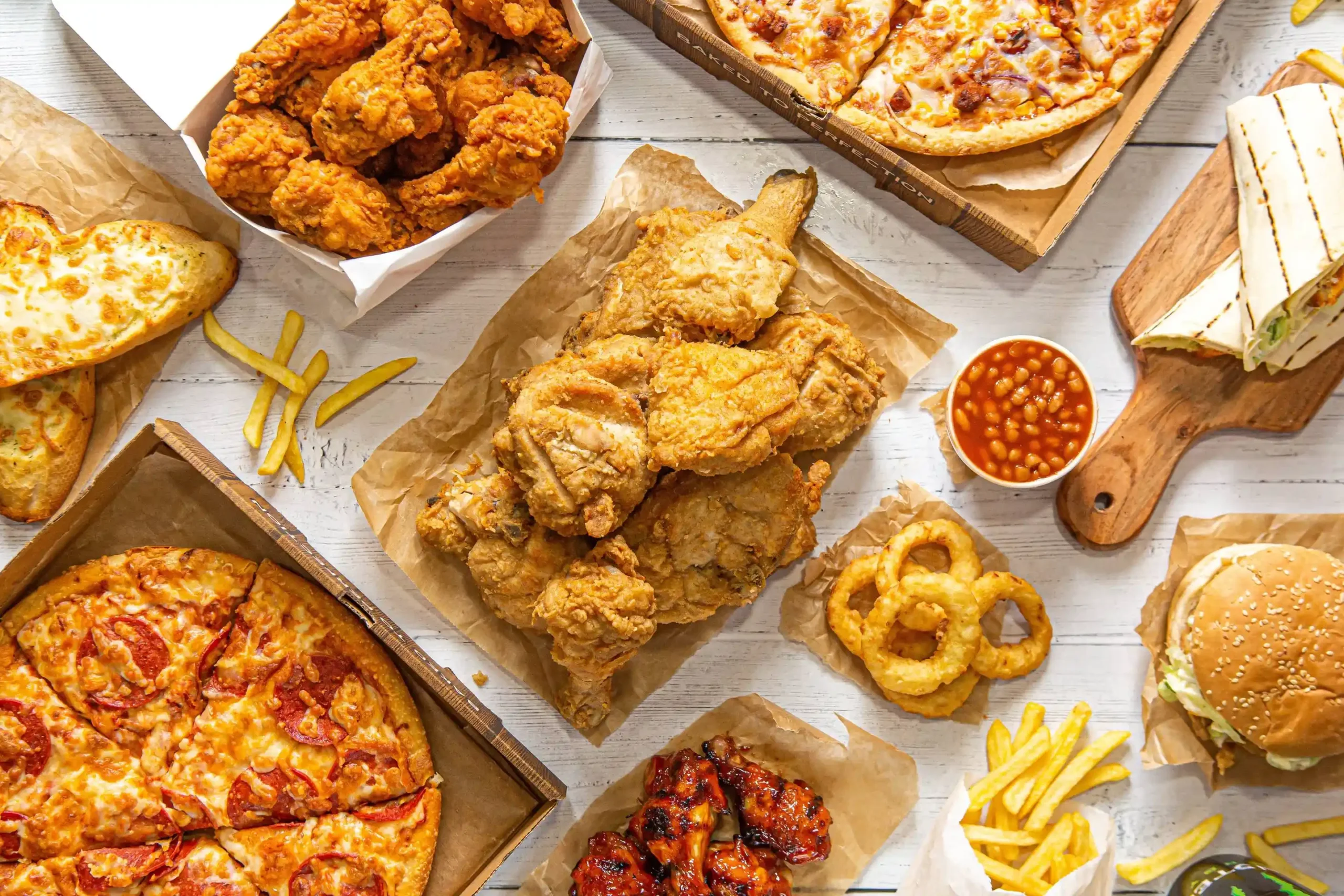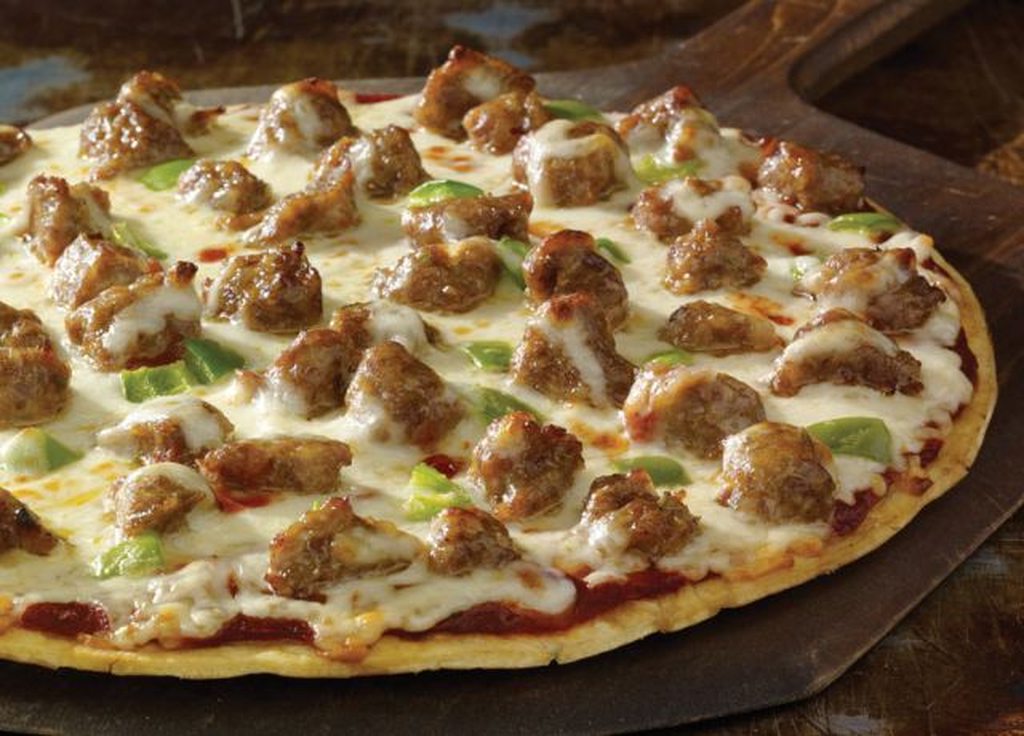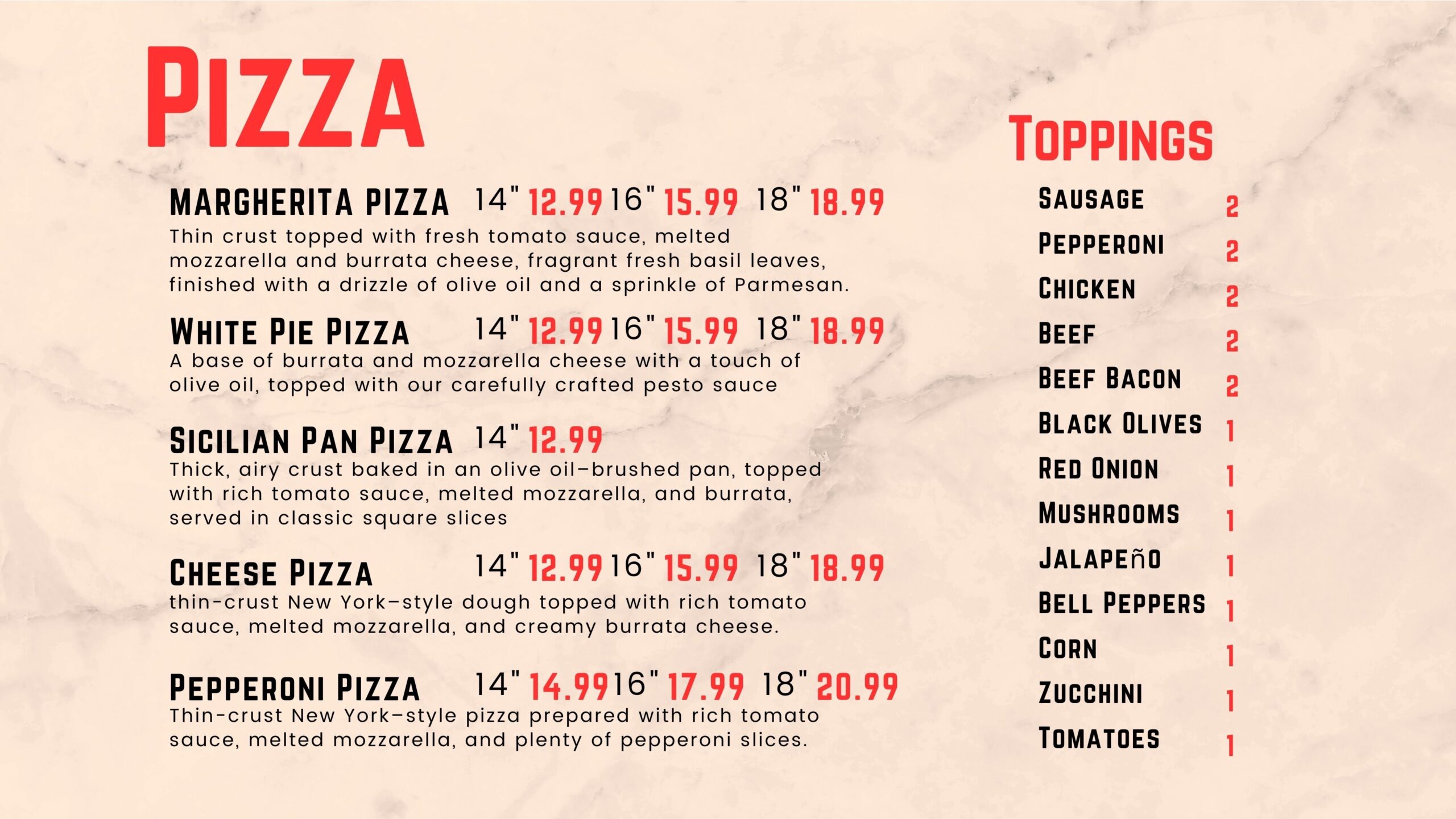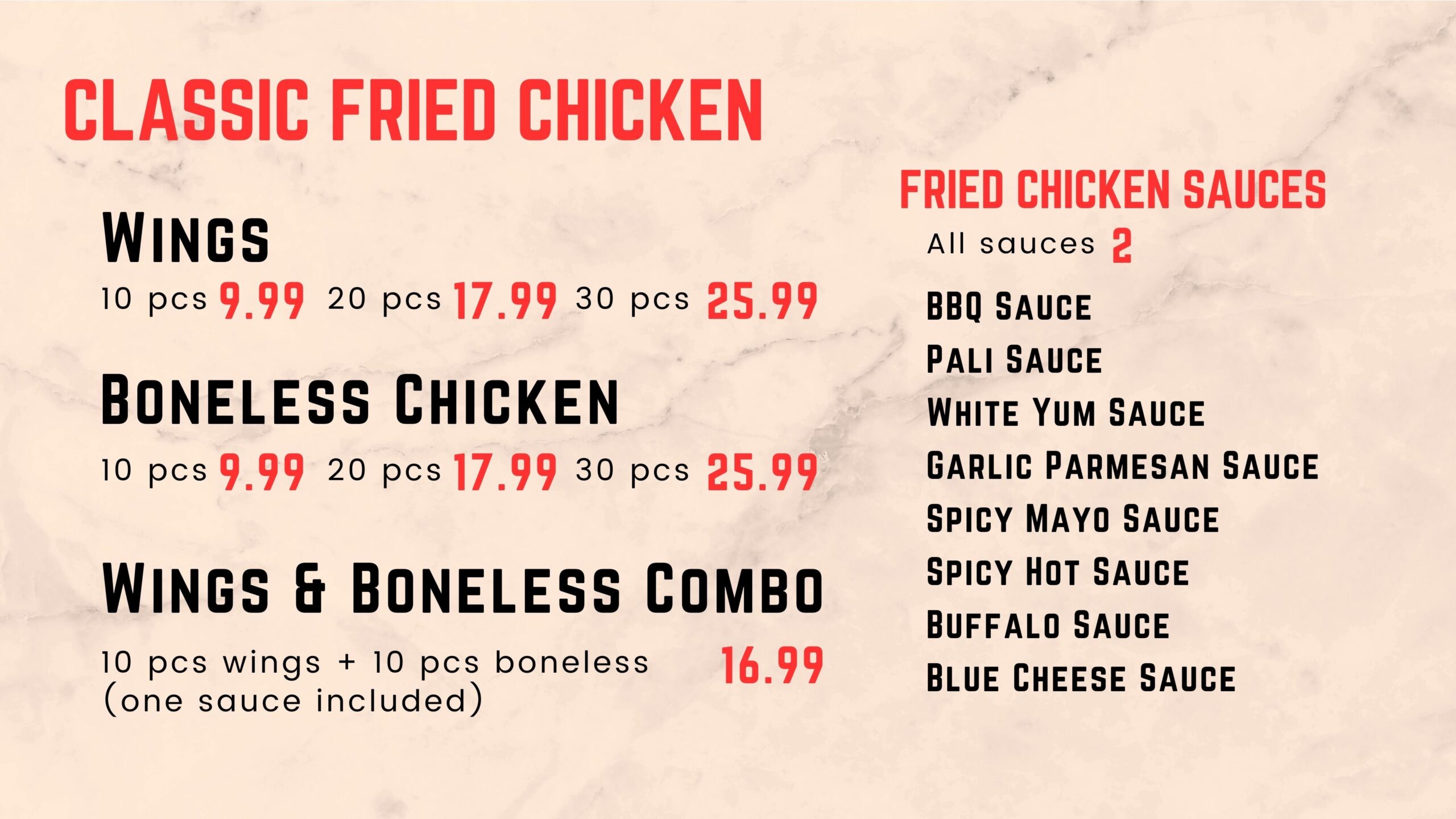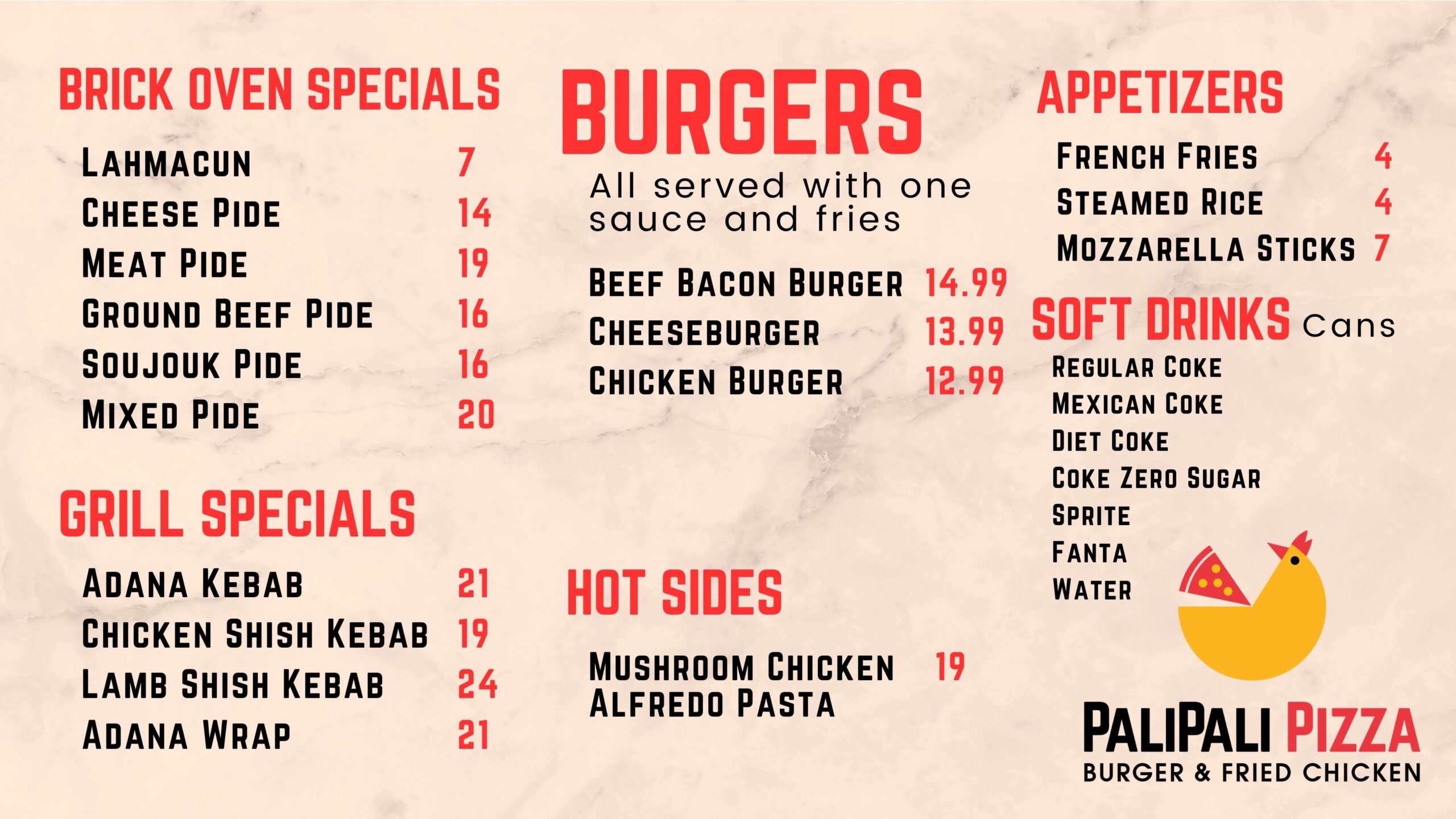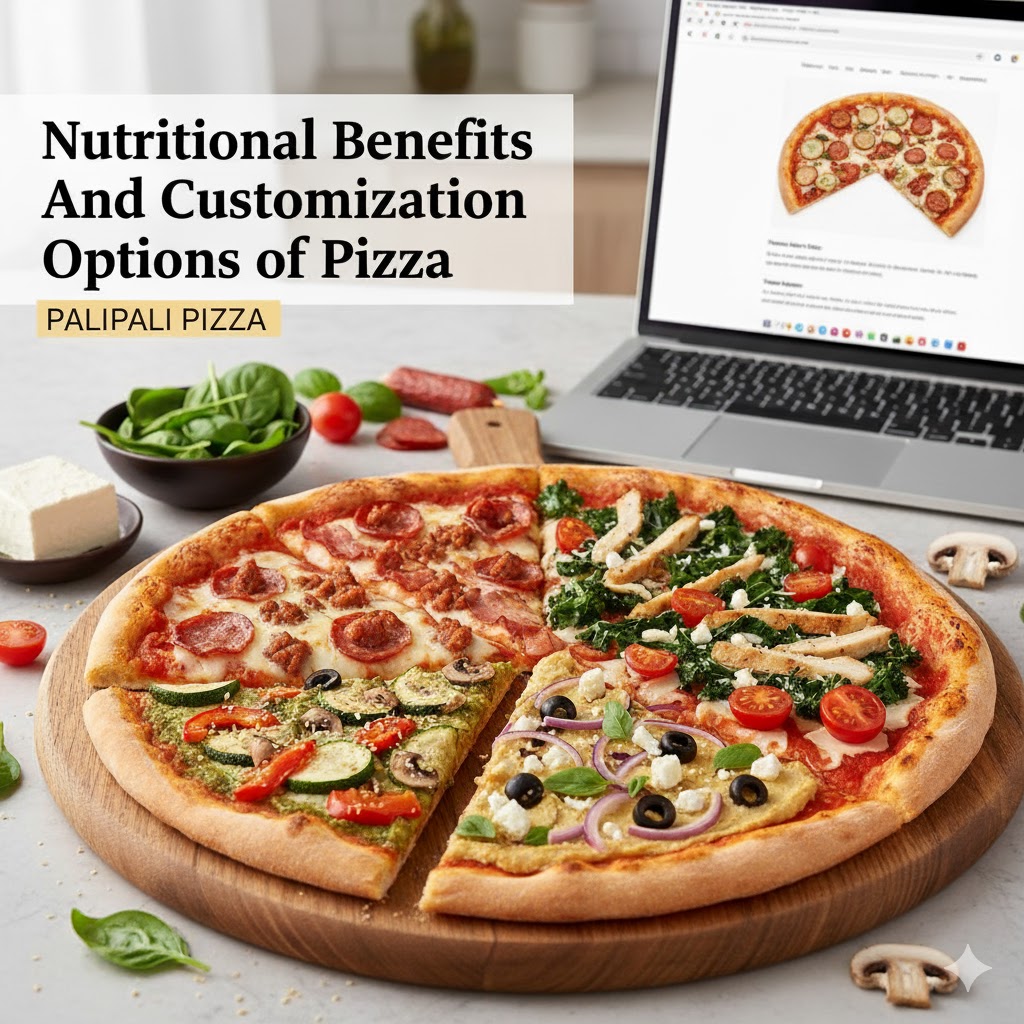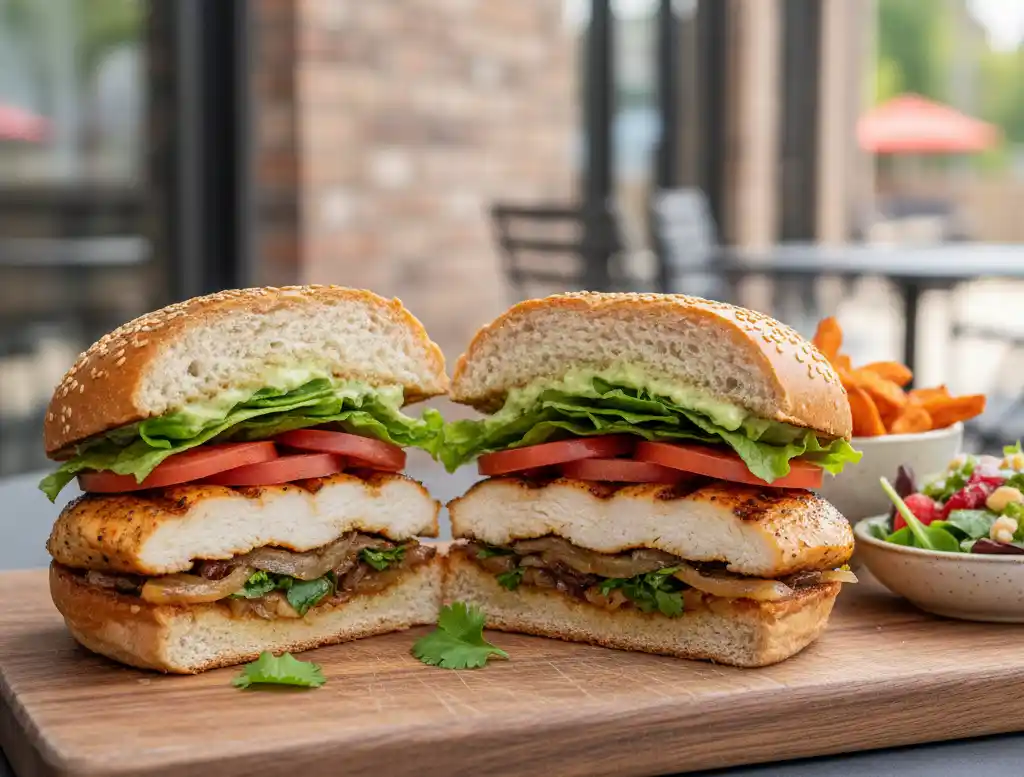Pizza is considered the pinnacle of indulgence- a guilty pleasure that must be saved only when it is the weekend or game night or a quick to go meal. And yet this reputation is but half the tale. As much as greasy slices full of cheese and processed meat might make pizza qualify as a junk food, the reality of the matter is that pizza is also a customizable and nutritionally balanced meal.
In its purest form a pizza is made out of four basic components, which are crust, sauce, cheese, and toppings. All these layers can be modified and modified to provide valuable nutrients such as protein, fiber, vitamins, and minerals. Pizza can be healthy and tasty whether it is a thin-crust pizzeria in the Mediterranean style with a highly nutritious combination of fresh vegetables, or a gluten-free cauliflower crust with thin slices of lean proteins.
This guide explores the nutritional benefits hidden in pizza’s classic ingredients and shows how customization options make it one of the most versatile foods in the world. By the end, you’ll see why pizza is far more than just comfort food, but a dish that can align with nearly any diet or lifestyle.
Understanding the Nutritional Profile of Pizza
To enjoy the healthiness of pizza, it is useful to dissect its major ingredients and see how each of them works in nutrition. Pizza is not only about indulgence but it is a nutritious meal, a macronutrient-rich meal when made in a careful manner.
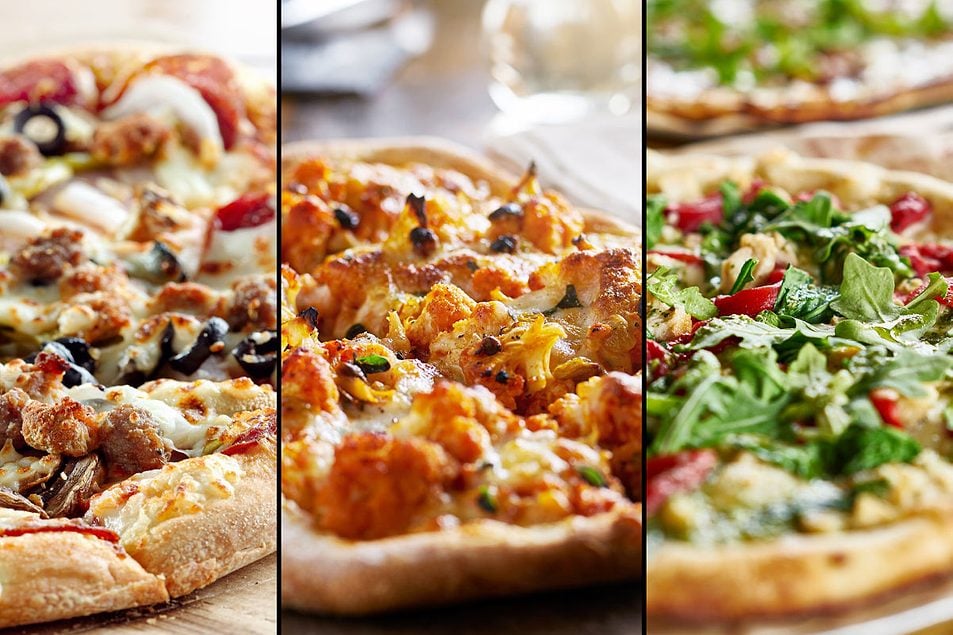
- Carbohydrates (Crust):
Carbohydrates are mainly generated by the crust which supplies the body with energy. Where refined white flour crusts are quick energy, whole-grain or other crusts are fiber supplying nutrients, which aid digestion, and fullness. - Proteins (Cheese and Toppings):
Proteins are provided by cheese, meats, and plant-proteins, which aid in muscle repair and provide energy to last. A pizza with chicken, shrimp or tofu can compete with the protein content of most other complete meals. - Fats (Cheese and Oils):
Fats are added through cheese and cooking oils and are involved in the functioning of the brain and in the control of hormones. Replacing the fats with healthier ones such as olive oil or nuts will ensure that the meal does not become too heavy but contains large quantities of nutrients. - Micronutrients (Sauces and Vegetables):
Spinach, bell peppers, mushrooms, and onions are some of the ingredients that contain vitamins (A, C, K, folate) as well as minerals (iron, magnesium, potassium). Lycopene is one of the potent antioxidants associated with heart-related conditions that is abundant in tomato sauce alone. - Portion Control and Balance:
Although one slice will give a good combination of nutrients, taking more than one slice or excessively adding high-fat toppings will cause the scale to lean toward excess calorie consumption. The secret to eating pizza as a health diet is moderation.
Simply put, pizza can either be a nutrient powerhouse or an indulgent splurge—depending on the ingredients and portion sizes you choose.
Healthier Pizza Crust Choices
The crust forms the base of any pizza and the nutritive content of the crust can make a giant difference. Traditional white crust with flour is delicious, but it has a low amount of fibers and nutrients. Luckily, you can have healthier versions that will not have you sacrificing health to eat a pizza.
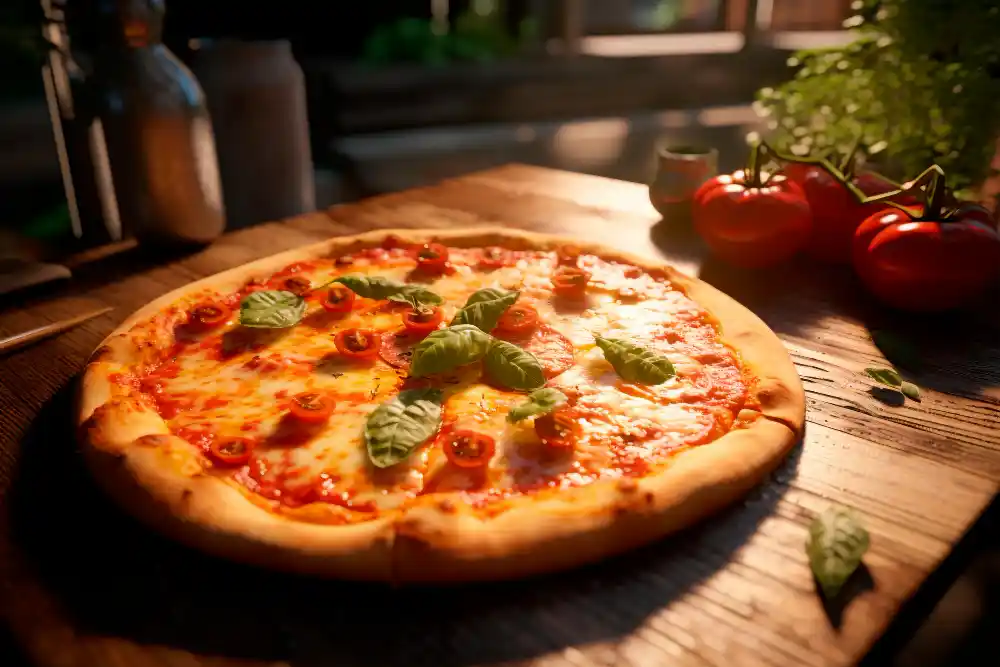
- Whole Wheat Crust:
This crust is prepared using whole grains; it contains a lot of fiber, iron, and B vitamins. It is slower to digest than refined flour and will keep you fuller and blood sugar levels stable. - Cauliflower Crust:
Cauliflower crust is a healthy low-carb choice that is low-calorie and lower in carbs compared to other alternatives and still provides vitamin C and K. It is ideal among gluten-free dieters and those who want a high-protein base. - Gluten-Free Crusts (Chickpea, Almond, Rice Flour):
The crusts are gluten-free, and they increase the proteins and fibers. Plant protein such as chickpea flour is very nutritious and contributes to a nutty taste. - Thin Crust vs. Deep Dish:
The difference between a thin crust and deep dish crust or stuffed crust is quite a big one in terms of calorie and carb intake. This alternative will enable the toppings to be seen without distracting your diet. - Creative Alternatives:
Other adventurous diners may try using zucchini, sweet potato, or quinoa crusts, which provide also more vitamins, minerals, and different textures.
Cheese Varieties and Health Considerations
Cheese is the soul of pizza—it brings flavor, texture, and satisfaction. But it’s also the ingredient most often associated with excess fat and calories. With thoughtful choices, cheese can remain a nutritious, protein-rich part of your pizza.
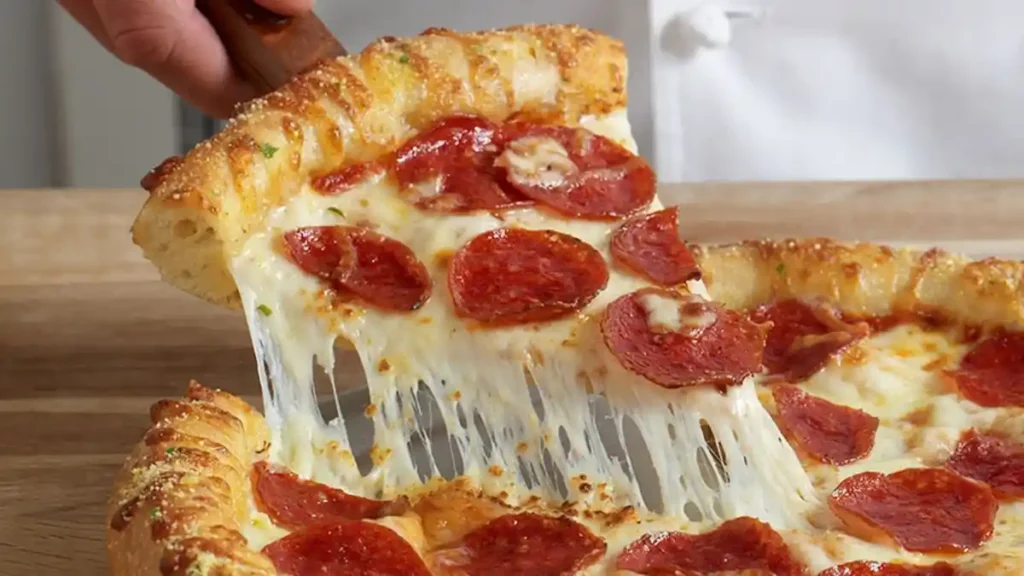
- Mozzarella (Classic Choice):
- Lower in fat compared to many other cheeses.
- Excellent source of calcium and protein.
- Part-skim mozzarella offers the same flavor with fewer calories.
- Lower in fat compared to many other cheeses.
- Feta:
- Lower in fat and calories than mozzarella or cheddar.
- Provides a tangy flavor, which means you can use less without sacrificing taste.
- Rich in calcium and probiotics.
- Lower in fat and calories than mozzarella or cheddar.
- Ricotta:
- Creamy but light, often used as a topping dollop.
- Contains high-quality protein and less sodium than processed cheeses.
- Creamy but light, often used as a topping dollop.
- Cheddar and Parmesan:
- Strong in flavor, so small amounts go a long way.
- Both are rich in calcium and vitamin A.
- Strong in flavor, so small amounts go a long way.
- Plant-Based Cheese (Vegan Options):
- Made from nuts, soy, or coconut.
- Lactose-free and often fortified with B12 and calcium.
- Can be higher in additives, so choosing minimally processed versions is best.
- Made from nuts, soy, or coconut.
- Smart Cheese Habits:
- Opt for lighter portions or mix strong cheeses with milder ones.
- Try a “half-and-half” approach: part-skim mozzarella blended with feta or Parmesan for a flavor boost without excess calories.
- Opt for lighter portions or mix strong cheeses with milder ones.
Cheese doesn’t need to be avoided—it just needs to be chosen mindfully, so your pizza remains rich in protein and calcium while staying balanced.
Dietary Customization Options
The fact that pizza can be modified to the various eating habits and limitations is one of its best strengths. Regardless of your diet and healthy habits, pizza is a customized meal that can easily integrate into your diet.
Vegetarian-Friendly Options
To vegetarians, pizza has got limitless possibilities. Raw vegetables such as spinach, mushrooms, peppers and onions are also good sources of flavor as well as the necessary vitamins and minerals. Toppings high in protein like paneer, tofu or additional cheese provide satiety and nutritional balance. A vegetarian pizza can be wholesome and healthy with the proper crust and the sauce.
Vegan-Friendly Choices
Pizza can also be consumed by vegans. Dairy-free cheeses made of plants which are based on nuts or soy copy the creamy consistency of dairy and toppings such as roasted vegetables, olives, and herbs change the taste. Olive oil or hummus serve as the base, which gives further options instead of using traditional tomato or cream sauces. Vegan pizza can be light, full of nutrients and equally satisfying as their regular counterpart.
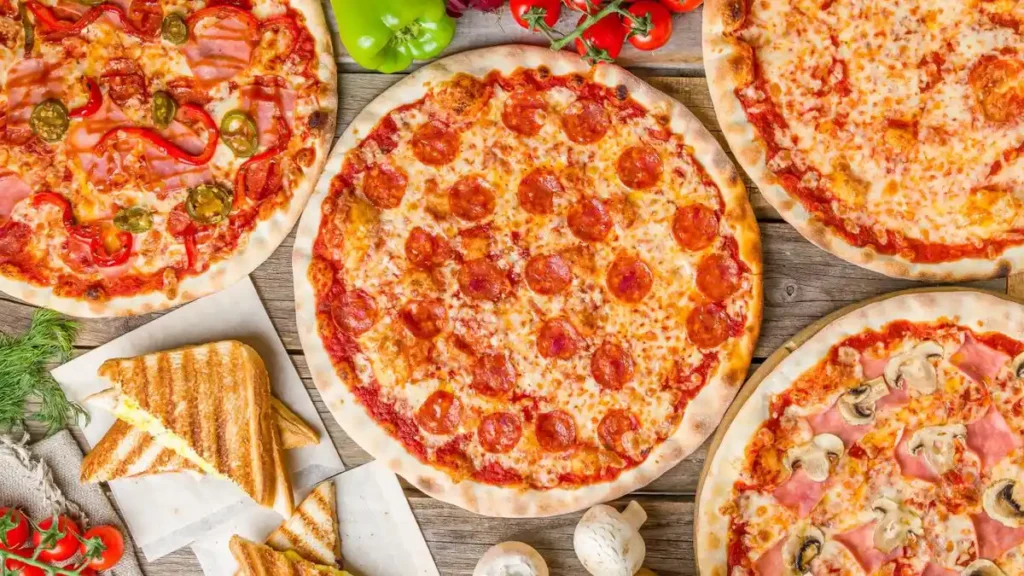
Gluten-Free Alternatives
For those with gluten intolerance or celiac disease, traditional wheat-based crusts can be replaced with alternatives such as cauliflower, almond flour, or chickpea flour bases. These options not only eliminate gluten but also introduce higher fiber content and unique flavors. Gluten-free pizzas allow individuals to enjoy the same variety of toppings while maintaining digestive comfort.
Keto and Low-Carb Variations
Pizza can also be adapted to a low-carb diet or a ketogenic one. There are cheese or meat-based crusts instead of flour-based crusts, which allows one to cut down on carbohydrates considerably. Such toppings as pepperoni, sausage, chicken, and high-fat cheese will meet the keto-friendly needs and yet provide the flavor and the reward of the regular pizza.
High-Protein Options
Pizza can also be customized to suit the needs of athletes or people who are seeking to increase their protein consumption. With the addition of extra cheese, low-fat meat, such as chicken or turkey, and even low-protein foodstuffs, such as beans or lentils, pizza can become a muscle-supporting meal. Combined with whole-grain crusts, such pizzas are balanced in protein, carbs, and healthy fats to make them the most healthy food.
Homemade vs. Restaurant Pizza: Which Is Healthier?
Both homemade and restaurant pizza have their advantages, but the choice largely depends on your priorities—whether it’s health, convenience, or indulgence.
- Homemade Pizza:
- Control Over Ingredients: You decide the type of flour, cheese, sauce, and toppings. This allows you to prioritize whole grains, lean proteins, and fresh vegetables.
- Custom Portion Sizes: Smaller crusts and balanced toppings help with calorie control.
- Experimentation: You can try unique flours (almond, chickpea, cauliflower) or plant-based cheese for healthier alternatives.
- Downside: Time and effort required for preparation and baking.
- Control Over Ingredients: You decide the type of flour, cheese, sauce, and toppings. This allows you to prioritize whole grains, lean proteins, and fresh vegetables.
- Restaurant Pizza:
- Convenience and Flavor: Restaurants often have wood-fired ovens, artisanal crusts, and gourmet toppings that can be hard to replicate at home.
- Variety: Menus often include multiple crust and topping options, appealing to a wide range of tastes.
- Nutritional Drawback: Restaurant pizzas can be higher in sodium, fat, and calories due to processed meats, extra cheese, and oil-rich recipes.
- Upside: When ordered wisely (thin crust, extra veggies, less cheese), restaurant pizza can still be a balanced meal.
- Convenience and Flavor: Restaurants often have wood-fired ovens, artisanal crusts, and gourmet toppings that can be hard to replicate at home.
Final Thoughts
Pizza is much more than a fast treat — it’s a meal that brings our Palatine community together. At PaliPali Pizza, located at 100 West Northwest Highway, Palatine, IL, we believe that pizza can be both flavorful and healthful when made with the right ingredients. From whole-grain or cauliflower crusts to antioxidant-filled sauces, lean proteins, and garden-fresh veggies, every slice we make is designed to satisfy your taste buds while supporting a balanced lifestyle.
What truly sets our pizza apart is its flexibility. Whether you’re vegan, gluten-free, low-carb, or simply a fan of bold, cheesy flavors, you can always find a pizza at PaliPali Pizza that fits your preferences perfectly — without ever sacrificing flavor. We love that pizza allows everyone to enjoy a meal that feels personal and comforting, made exactly the way they like it.
Across cultures and around the world, pizza has evolved through local ingredients and creative combinations. Here in Palatine, we take pride in honoring that tradition while adding our own local touch. Our pizzas are crafted to celebrate both global inspiration and neighborhood comfort — reminding you that great taste doesn’t have to be complicated. And even though making pizza at home has its charm, our restaurant offers convenience, quality, and unforgettable flavors that keep our customers coming back for more.
Ultimately, pizza isn’t just a guilty pleasure — it’s a celebration of creativity, culture, and comfort. At PaliPali Pizza, we prepare every pie with care and passion, turning a simple meal into an experience that nourishes your body and fulfills your senses. Whether you’re dining in, grabbing a takeout order, or sharing a meal with loved ones, you’ll always find that special touch that makes local pizza so unique.
So next time you’re craving a pizza that feels like home, stop by PaliPali Pizza or give us a call at (224) 539-8192. Taste the perfect blend of flavor, freshness, and community — all right here in Palatine, IL.



